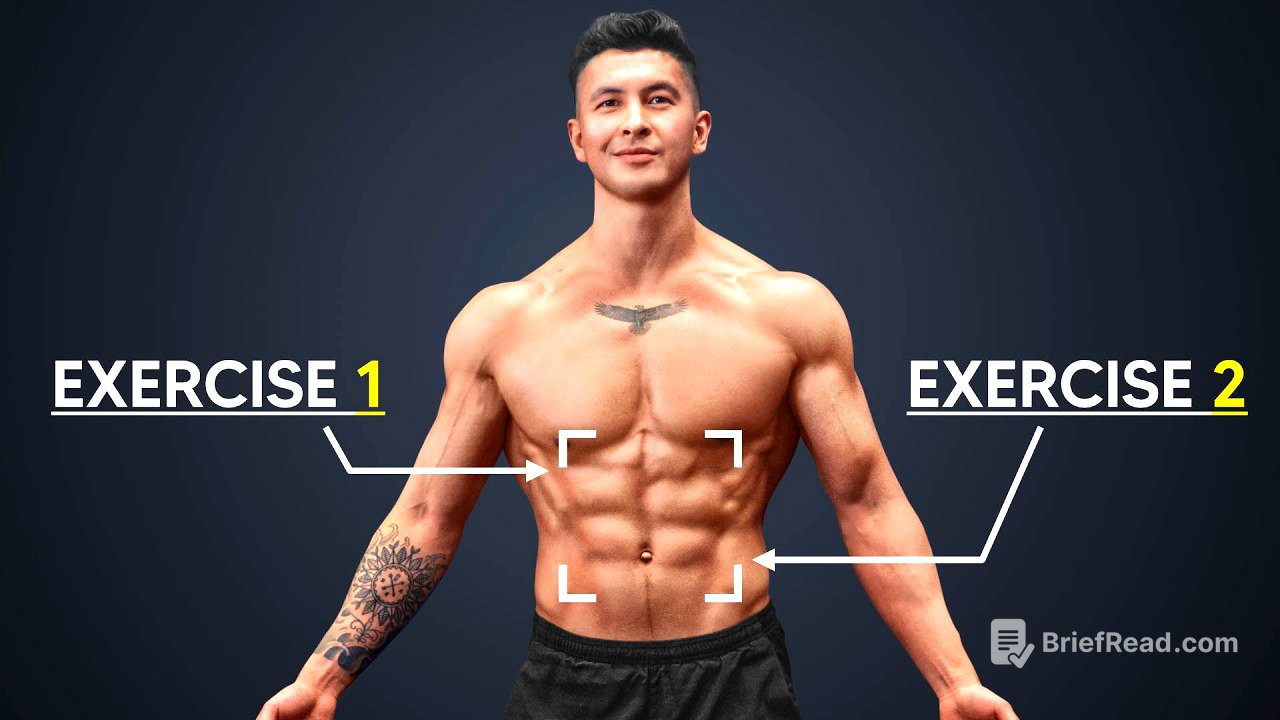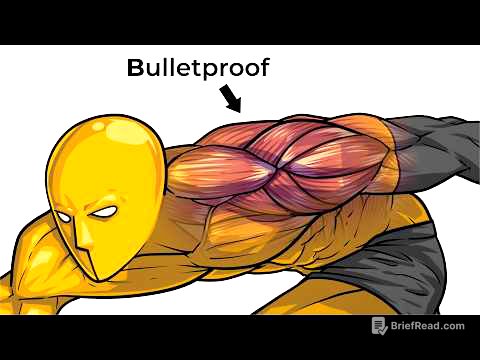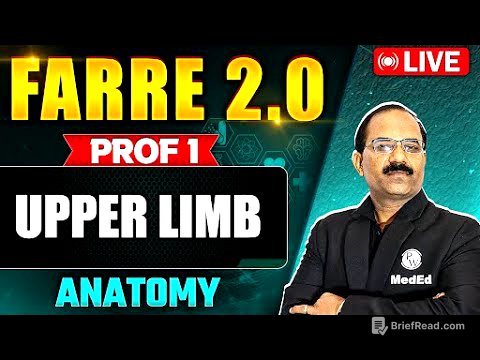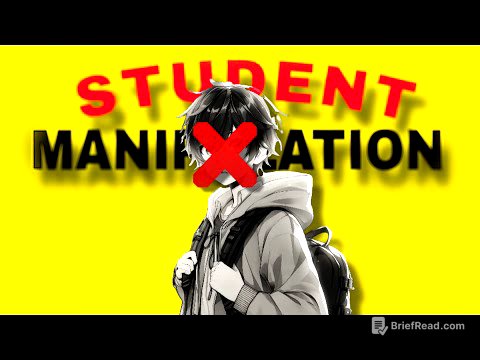TLDR;
This video is all about building a six-pack. It busts the myth that only low body fat is needed for defined abs, highlighting the importance of training the ab muscles themselves. The video shares two key exercises, one for lower abs (bench reverse crunches) and one for upper abs (rope cable crunches), along with variations for different fitness levels. The main takeaway is to train your abs like any other muscle, focusing on progressive overload and proper form, while also keeping an eye on your overall body fat percentage.
- Abs need to be trained directly to grow, not just be visible through low body fat.
- Proper form is crucial to avoid hip flexors taking over during ab exercises.
- Progressive overload and adequate rest are important for ab muscle growth.
Intro: The Secret to Building Visible Abs [0:00]
The video starts by saying that there are tons of ab exercises, but only a couple actually help in building a six-pack. It points out that having visible abs isn't just about being lean. Some people can be super lean and still not have popping abs, while others with a bit more body fat do. Genetics play a role, but how you train your abs is also super important. A study is mentioned where soccer players who trained their abs saw growth in their ab muscles, showing that you can actually increase the size of your abs. This is useful, especially if you're not naturally gifted with thick abs.
The Myth of Core Strengthening Exercises [1:15]
Most ab exercises you see online won't really build your six-pack. Exercises like planks and butterfly kicks are great for core strength, but they don't do much for growing your abs. That's because they mainly stabilize your core, like during compound movements. The main job of your abs is to bring your rib cage and pelvis together by rounding your spine. A common mistake is keeping your back straight during ab exercises, like leg raises. If you do that, your hip flexors end up doing most of the work, not your abs.
Lower Ab Exercise: Bench Reverse Crunches [2:46]
To target the lower abs, you need an exercise where your lower body moves towards your upper body. While leg raises can be done with correct form, the presenter prefers bench reverse crunches. The key is to bend your knees and focus on lifting your hips up, crunching your knees towards your chest to round your spine in a C-shape. For beginners, you can start by just lifting your tailbone off the bench. To make it harder, straighten your legs more. Using an ab mat to increase the stretch at the bottom is also recommended.
Upper Ab Exercise: Rope Cable Crunches [4:53]
For upper abs, you want an exercise where you're folding your upper body towards your lower body. Crunches are a good starting point, but you need to avoid flattening your spine. Instead, focus on folding your chest down towards your pelvis in a C-shape. Using an ab mat, stability ball, or even a rolled-up towel can help increase the stretch. Once crunches get too easy, move on to rope cable crunches. Again, make sure you're not using momentum or your hip flexors. Lock your hips and focus on contracting your upper abs to fold your chest down. You can also try turning around and crunching away from the cable for a greater challenge.
Training Tips and the Importance of Body Fat [7:07]
Train your abs like any other muscle: hard, with progressive overload, and give them time to rest. Doing three sets of 6-12 reps for each exercise is recommended. Once you can do 12 reps for all three sets, increase the difficulty or add weight. Start by training them once a week, and maybe increase to twice a week if you're serious. But remember, even the biggest abs will be hidden if they're covered by too much fat. So, combine ab training with a good plan to lose the extra fat.









